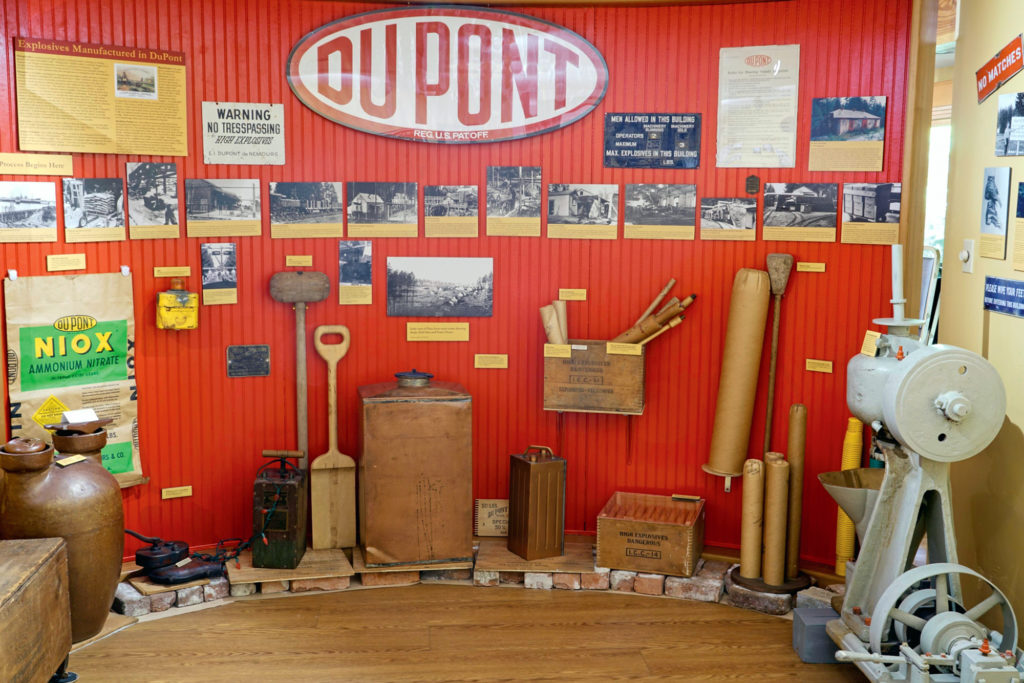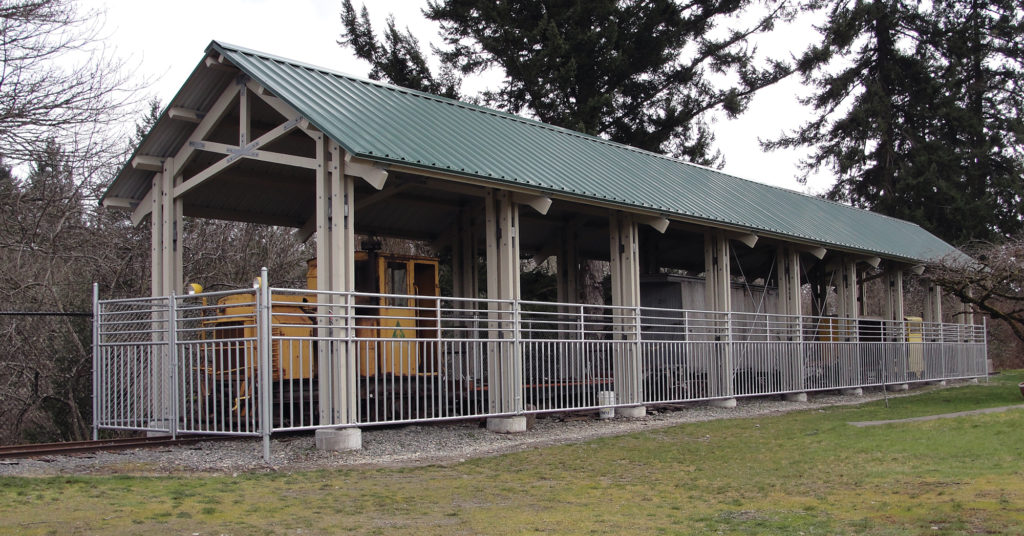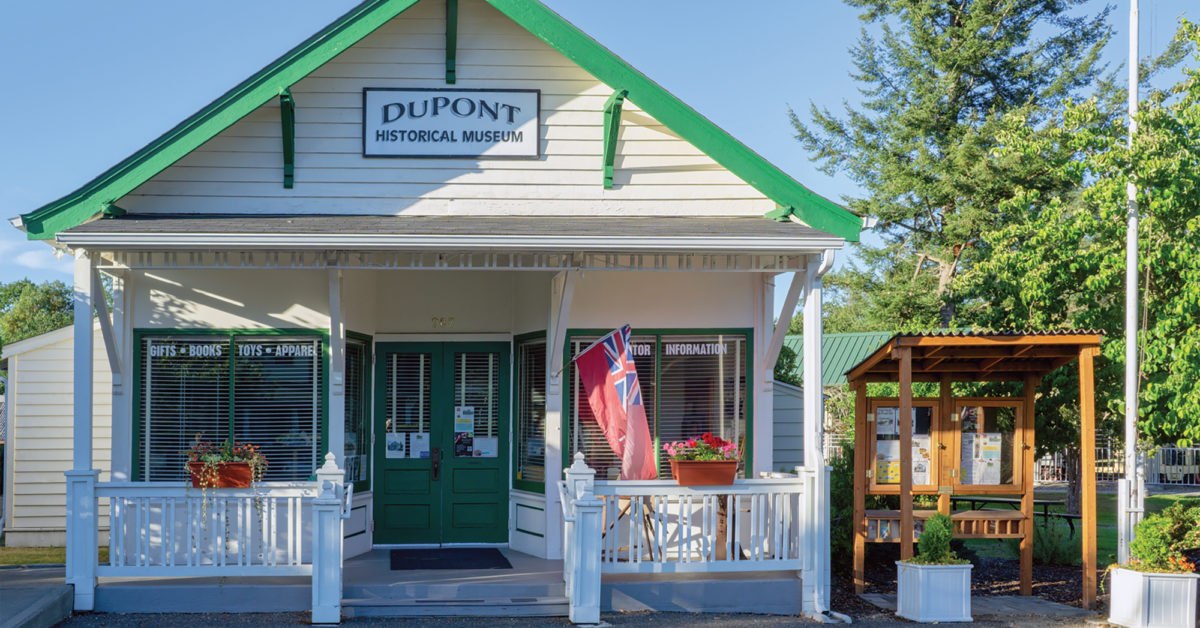The Puget Sound region is integral to the history of Washington, which became a territory in 1853 and a state in ’89. Among the regional highlights is the DuPont Historical Museum, in the namesake company town once known for explosives manufacturing. What truly blows museumgoers minds is the astonishing list of firsts celebrated in its exhibits and displays. Among other milestones, the area was home to both the first European trading post on Puget Sound (Fort Nisqually, dating from 1833) and the first American settlement in what would become Washington (Nisqually Mission, active from 1840–42); was the home port of the first steamboat to ply the Pacific Northwest coast (Beaver, launched in 1835); recorded the region’s first overland road (1834); hosted the first known Independence Day celebration (1841) north of the Columbia River; and was the first named location in Oregon Territory (organized in 1848). In 1906 the DuPont chemical company bought land at the Fort Nisqually site to build the first industrial plant in the Pacific Northwest. Completed in 1909, the DuPont Powder Works opened the way for roadbuilding, canals, rail lines, mining and other applications worldwide, and it kept manufacturing explosives until 1975.
GET HISTORY’S GREATEST TALES—RIGHT IN YOUR INBOX
Subscribe to our HistoryNet Now! newsletter for the best of the past, delivered every Monday and Thursday.
The museum building, which dates from 1917, was originally a butcher shop and later served as DuPont’s first City Hall. In 1977 city officials earmarked the building for use as a museum to showcase company artifacts and photographs. Today, with continued support from the city, the DuPont Historical Society and volunteers, the museum has expanded to highlight regional human history.

The first room relates the history of the Nisqually, a Coast Salish people who have lived in the Nisqually River delta for some five millennia. In 1855 territorial officials confined them to a reservation farther inland along the river. Related artifacts on display include baskets and tools made and used by the Nisqually and other Salish bands.
In 1833 British-owned Hudson’s Bay Co. (HBC) established Fort Nisqually, a trading post along the sound, to facilitate the exchange of European goods for beaver and other furs. A decade later HBC built a larger fort a mile inland along Sequalitchew Creek. By then Beaver, a stout side-wheel steamboat captained by company man William Henry McNeill, had arrived in the sound to serve the fort. In 1840 HBC started the subsidiary Puget Sound Agricultural Co., whose workforce centered on the fort and provided wool, beef, cheese and other products to regional and international markets. Among the artifacts in the museum collection are handmade tools, period firearms, and trade blankets and beads.
Americans soon made their presence known. In the spring of 1841 a wide-ranging expedition led by U.S. Navy Lieutenant Charles Wilkes surveyed Puget Sound, pausing long enough to mark the Fourth of July. In 1846 signatories ratified the Oregon Treaty, officially recognizing all land south of the 49th parallel part of the United States. HBC continued to operate its fort until the Americans bought it out in 1869. Edward Huggins, who was managing Fort Nisqually when it shuttered the following year, promptly became an American citizen and filed a claim on 1,000 acres, including the grounds of the fort. Huggins farmed the tract until 1906, when he sold it to DuPont.
DuPont also built wharf near the mouth of the creek from which to ship dynamite for such major industrial projects as the Panama Canal and the Grand Coulee Dam. Narrow-gauge trains shuttled supplies and products to and from the factory
Founded in 1802 in Wilmington, Del., E.I. DuPont de Nemours & Co., the era’s largest supplier of gunpowder to the U.S. military, purchased 3,600 acres of land from Huggins and neighboring farmers to establish a presence on the West Coast. To house workers the company initially threw up temporary tar paper homes on the site of the fort. The company town grew up in their midst and by 1917 boasted more than 100 family homes, a hotel for single employees, a post office, company clubhouse, infirmary, schoolhouse, church, newspaper and stores, including the aforementioned butcher shop. DuPont also built wharf near the mouth of the creek from which to ship dynamite for such major industrial projects as the Panama Canal and the Grand Coulee Dam. Narrow-gauge trains shuttled supplies and products to and from the factory.

The company town remained exclusive to employees until 1951 when DuPont sold the homes, enabling residents to incorporate as an official town. The second room of the museum re-creates a typical kitchen from one of the employee homes, many of which are still standing. Exhibits in the third room span the company town era and include a display reminiscing about the local high and previous schools in District No. 7, which dates back to 1860. Another display covers the 1976 purchase of the company grounds by the Weyerhaeuser Co., which intended to build a deepwater port from which to export timber. When those plans fell through, it repurposed the land to create the Northwest Landing master-planned community. In 1987 the historical society successfully lobbied to have the remaining buildings of the company town, known as DuPont Village, listed on the National Register of Historic Places.
Recent additions to the museum include a replica of a 1906 tar paper shack, a mural of a 1910 company home, and a wooden porch and pillars reflective of a present-day home in Northwest Landing. Beneath a protective canopy behind the museum building rests the last intact “dynamite train” in the state of Washington. Built in 1941, the 12-ton narrow-gauge Plymouth engine pulled its explosives-packed cars—very gently—from the factory to the wharf, supplying American forces throughout the Pacific during World War II.
The Dupont Historical Museum is at 207 Barksdale Ave. For more information call 253-964-2399 or visit dupontmuseum.com. WW






